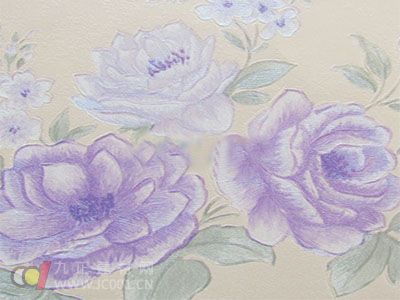The Evolution of Wallpaper 1. Paper-Based Wallpaper Era The earliest form of wallpaper was paper-based, featuring printed designs, embossed textures, or fabric-like finishes. This type of wallpaper was widely used in the early stages of interior decoration. Advantages: It offers excellent breathability, allowing moisture from the wall to escape, which helps prevent discoloration and bubbling. It is also affordable and easy to install. Disadvantages: However, it is not very durable, lacks water resistance, and can be easily damaged during installation or cleaning. As a result, it is now rarely produced. 2. Foamed Wallpaper Era In the 1980s, foamed wallpaper became popular. Known as "foaming" or screen embossing, this technique involved adding a foaming agent to the materials, which expanded under high heat, creating a textured surface. Although it's no longer widely used today, you might still see remnants on ceilings in older buildings. Advantages: It provides a strong 3D effect, making rooms feel more spacious and visually interesting. Disadvantages: Despite its aesthetic appeal, it is not very durable. It can scratch easily, stain quickly, and is difficult to maintain. 3. Rubber-Surface Wallpaper Era By the late 1980s, rubber-surfaced wallpaper emerged as a new option. This type of wallpaper is currently the most commonly produced and used. It consists of a base paper layer, a polyvinyl chloride (PVC) surface layer, and is manufactured through processes like lamination, printing, and embossing. Advantages: Unlike foamed wallpaper, it has a firm texture, is waterproof, and resistant to moisture. It also features vivid printing, good embossing, and a wide range of patterns and colors. It’s practical and long-lasting. Disadvantages: Some volatile organic compounds may be released over time, and it is not environmentally friendly. It is also not biodegradable or recyclable. 4. Eco-Friendly or Green Wallpaper Era In recent years, eco-friendly wallpapers have gained popularity due to their non-toxic, odorless, and breathable properties. These options are ideal for those looking for sustainable and healthy interior solutions. Paper-Based Eco-Wallpaper: Made from natural paper and coated with non-toxic acrylic, it uses water-based adhesives and inks. It is highly adhesive, breathable, and resistant to cracking and scrubbing, making it perfect for children's rooms. Non-Woven Fabric Wallpaper: Constructed from non-woven fabric, it uses water-based adhesives and inks, offering a soft and flexible finish that is easy to apply and remove. Quartz Fiber Wall Decor: Composed of quartz fiber cloth and special coatings, it is elastic, dust-free, and safe for human health. It offers a modern and elegant look without compromising on quality or safety. Buffet Of Equipment,Kitchenware Products,Common Kitchen Ware,Kitchen Cooking Ware Shaoxing Biaoyi Hardware Products Co., Ltd. , https://www.byeob.com
The development stage of wallpaper